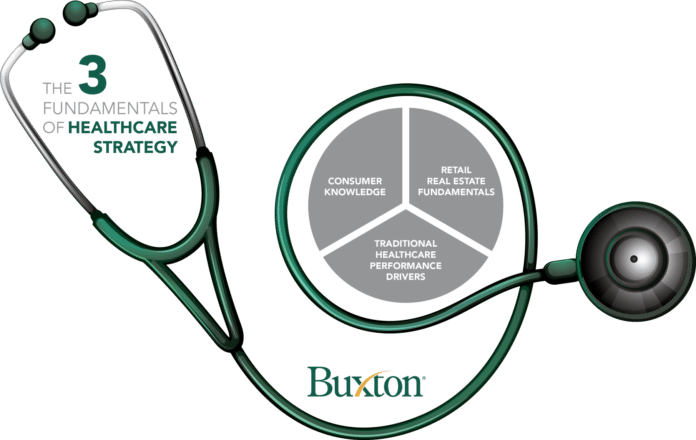In the last five years, there has been a tremendous rise in outpatient location expansion within the health care industry. Retailers like CVS and Walgreens have opened thousands of clinics, and urgent care facilities have boomed. Even health systems have jumped on the trend by partnering with retailers or opening their own outpatient facilities.
The reasons for this shift are largely financial. It’s much more economical – for both the patient and the provider – to deliver treatment in an outpatient environment than in a hospital setting. Outpatient facilities are an important tool in the strategy to lower health care costs.
But the factors that make a health care provider successful in an outpatient setting are very different from the factors that lead to success in a traditional inpatient environment.
Success in outpatient health care is ultimately driven by understanding and integrating three factors into a holistic strategy:
• Consumer knowledge
• Retail real estate fundamentals
• Traditional health care performance drivers
THE RISE OF THE HEALTH CARE CONSUMER
Traditionally, health care organizations viewed patients as simply that – patients. The focus was on medical conditions, and patients were labeled based on diagnoses. Providers may have segmented patients based on demographic information such as gender, race, and income, but the primary emphasis was on how those demographic factors influenced health care outcomes.
Today, many patients are demanding more from their health care providers. They want to receive the same type of customer experience common in retail and other industries. They want convenience and clear, up-front pricing.
This is prompting a significant mindset shift. Rather than viewing people simply as patients, health care providers must understand who their patients are as consumers.
• What are their attitudes toward health care? Are they proactive or reactive?
• How do they like to receive information? What channels are the best way to reach them?
• What’s their lifestyle? What things do they find engaging and interesting?
Defining the consumer profile of a health care provider’s patient base is the first step to designing effective communications, patient experience, and even real estate strategies for outpatient facilities.
RETAIL REAL ESTATE FUNDAMENTALS
Outpatient facilities have many similarities to retail stores. Rather than forcing consumers to travel to a central medical district, outpatient facilities aim to bring care to the areas where it is most convenient.
To select the right locations, providers must understand what drives traffic. Facilities need to be placed in areas with strong area draw, have ample parking or access to public transit, be easy to access and have visible signage. These retail real estate fundamentals are critical to the success of the outpatient facility.
TRADITIONAL HEALTH CARE SUCCESS FACTORS
Of course, for an outpatient health care facility to be successful it also needs to account for traditional drivers of performance. Providers need to look for locations with the right balance of health care supply and demand. Facilities placed in areas with too much competition relative to demand will have a difficult time succeeding. Health care organizations also need to look for areas with the appropriate payer mix based on their business model – whether that’s Medicare/Medicaid, private insurance, cash payers, or some combination.
When providers balance these three factors – needs and preferences of consumers, retail real estate fundamentals and traditional health care performance drivers – they have the elements they need to succeed in the new health care environment.
The problem is that a lot of health care providers still operate with a traditional mindset. They fail to see how competitive their industry is quickly becoming.
The current inefficiencies in the health care market are attracting a flood of new investors. Private equity investors and other investors are getting involved and using retail-style strategies to reimagine health care delivery. Whenever you have inefficiencies in the market, high levels of investment, and a lot of new competitors, there will ultimately be winners and losers.
Many providers also fail to grasp the importance of understanding their patients as consumers. They continue to focus on traditional methods of classifying patients that do little to inform business strategy.
Some even argue against consumer-oriented strategies by saying that consumers aren’t equipped to make their own health care decisions and therefore should not play a major role in the process.
Consumer-based, retail-style business strategies are not only possible, but are also essential. Providers who do not leverage these strategies will ultimately be left behind.
The health care organizations who thrive in this new environment will be those who adopt consumer analytics, factor in retail considerations, and integrate those elements into their traditional health care strategies.
The outpatient facility boom is just the beginning of the health care industry’s consumer revolution. Is your organization ready?
Bill Stinneford is senior vice president at Buxton, a consumer analytics firm that equips health care organizations with the insights they need to navigate a changing health care landscape.






